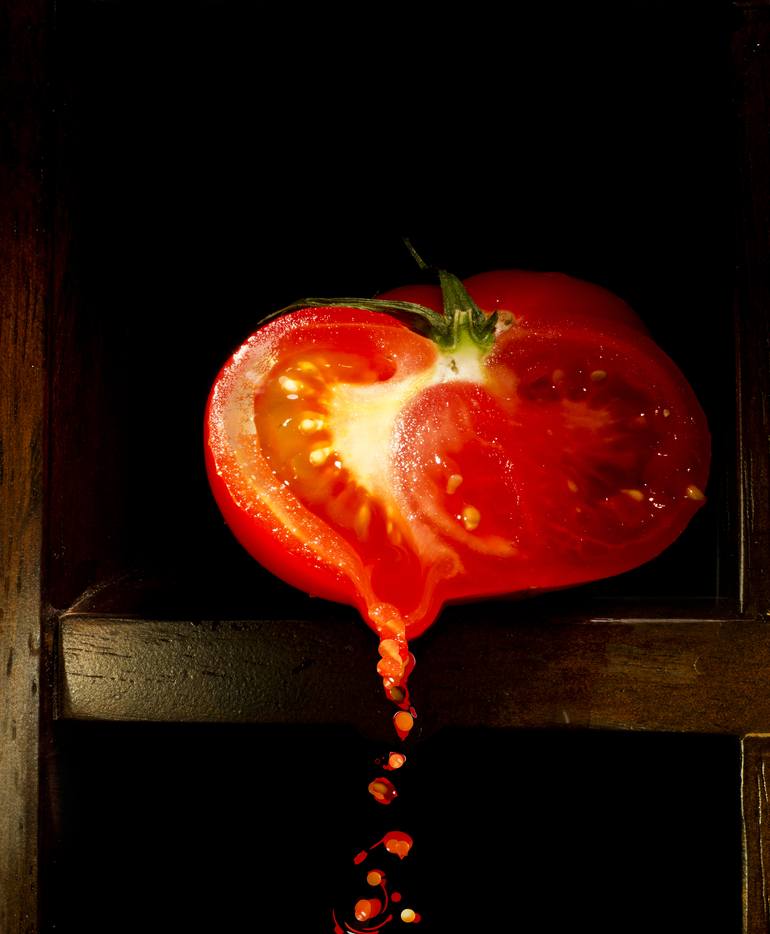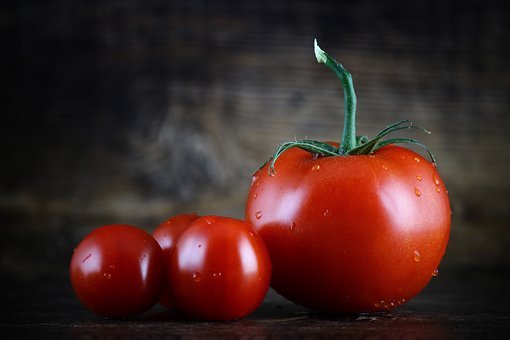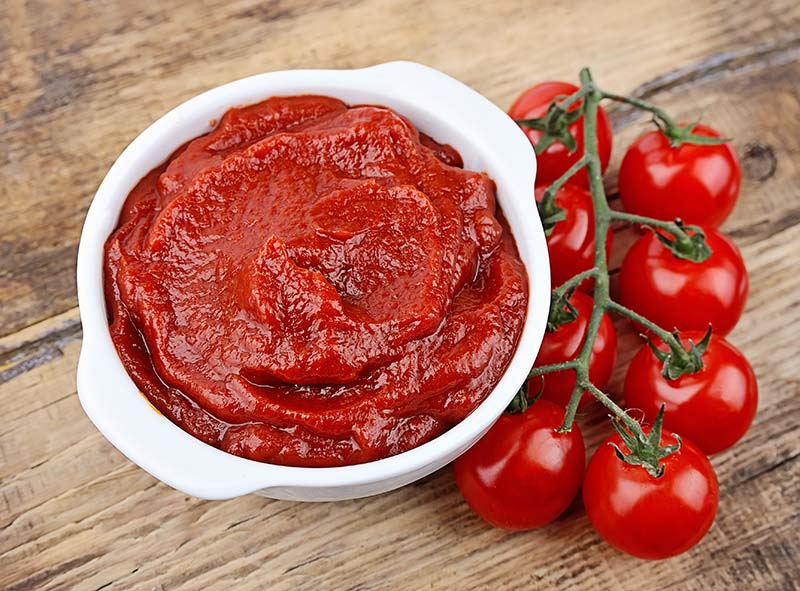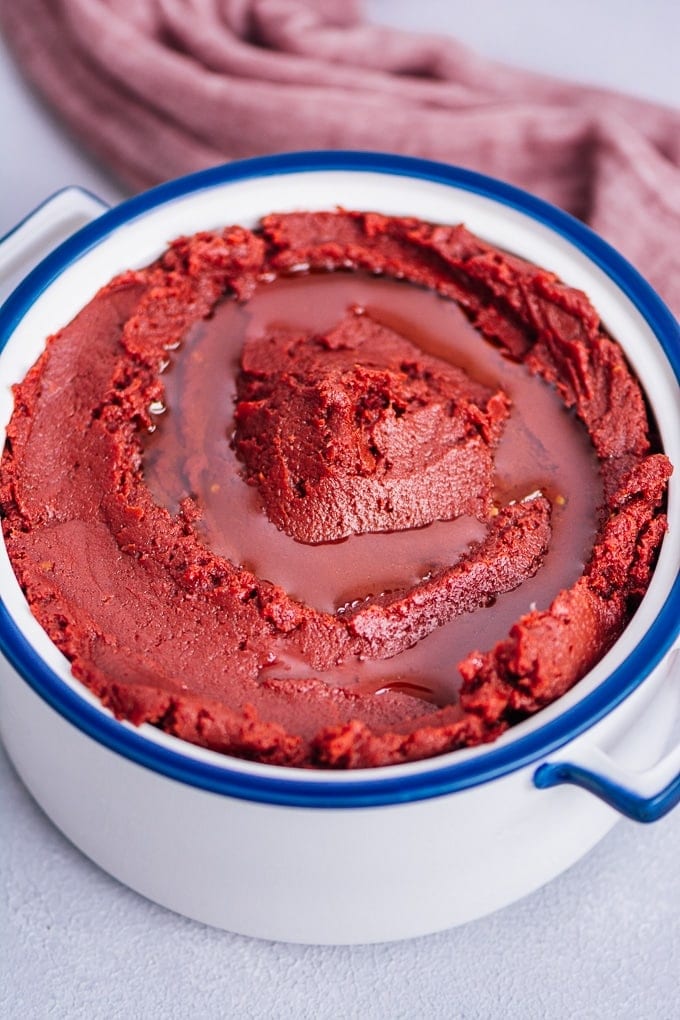What Is The Difference Between Tomato Puree And Tomato Paste?

Tomato puree and tomato paste are commonly used in Italian cuisine. They’re versatile and may be used in a variety of cuisines.
However, we frequently use the terms tomato puree and tomato paste interchangeably, oblivious that they are two different ingredients.
They’re manufactured from the same materials. However, they are still somewhat diverse in consistency, flavor, and preparation.
So, how do you tell the difference between tomato puree and tomato paste?

Tomato puree, like tomato paste, is a canned sauce produced from cooked tomatoes. On the other hand, the tomato paste has a thicker texture than the puree.
They also have different flavors, with the paste having a mild sweetness and the puree having an acidic, slightly bitter aftertaste.
Continue reading to learn more!
Tomato Puree is a type of puree made from tomatoes.
Tomato puree, often called crushed tomatoes, is a thick sauce made from pureed or cooked tomatoes removed from their seeds and skin. In most cases, the puree contains no extra spices or preservatives.
Suppose tomatoes aren’t available in your area all year long. In that case, this is one of the most acceptable ways to store them in their natural condition. Furthermore, it has a fridge shelf life of 12-15 days and a 3-4 months freezer shelf life.
If you have an abundance of tomatoes and don’t know what to do, purée them and freeze them in ice trays. Then, whenever you need them, utilize those cooled tomato puree cubes.
Tomato Paste is a type of paste made from tomatoes.
Tomato paste is a thick, concentrated paste formed by boiling tomatoes for several hours to remove the water.
Said tomato paste is made by cooking a handful of tomatoes, straining out the skins and seeds, then cooking the mixture until thickened.
Stabilizers such as citric acid, salt, herbs, and spices are also used in tomato paste production. They’re also available in triple and double-concentrated versions. It’s also possible to get them in tubes.
Tomato paste is a versatile ingredient that may be used in various recipes.
As a result, if you’re looking for a hot, creamy tomato soup, tomato paste is the way to go. It will give it a more substantial texture and flavor.
Tomato puree vs. paste: comparison chart
The comparison table below gives a quick summary of the differences between tomato puree and paste.
| Category | Tomato Puree | Tomato Paste |
| Consistency | More liquidized version | A thicker concentration of tomatoes |
| Method of Cooking | Lightly cooked for a short time and pips removed | Simmered for an extended period |
| Flavors | 8-23% NTSC | 24% NTSS- hence a more robust tomato flavor |
| Freezing and Storage | The best way to store it is to put it in zip-lock plastic bags and freeze it. | The best way to store is to add it to baking sheets and freeze them |
| Uses | Used for savory flavoring dishes and can have spices and flavors added | Perfect consistency to spread the paste on pizza and other suitable dishes |
Tomato paste vs. tomato puree: what’s the difference?

Tomato puree and tomato paste may resemble each other in appearance, ingredients, and beginning names.
However, they are two different items due to the cooking and preparation methods. We’ve gone over the differences between the two in greater depth here.
Consistency
Tomato puree is a liquidized form of tomato. Because the puree is liquid and difficult to distribute, the two have a different consistency. Compared to a puree, tomato paste contains a thicker concentration of tomato. Because of its concentration and texture, the paste improves the flavor of any item you added to it.
Method of preparation
To make tomato paste, you’ll need to cook it for a more extended period. Furthermore, you must remove the pips and cook the paste until it achieves a thick consistency.
You can make a tomato paste into a tomato puree by adding water. Alternatively, you can simmer tomato puree for a shorter time and remove the pips. This method produces a tomato paste that is more liquid.
Flavors
As you might expect, Tomato paste and puree both have a tomato flavor. On the other hand, the paste has a more robust flavor and contains no added flavors or spices.
The amount of natural soluble solids (NTSS) in each variable.
The NTSS content of the puree ranges from 8 to 23 percent, whereas tomato paste has an NTSS content of 24 percent. However, depending on the amount of liquid added to the puree, the intensity of NTSS volume can vary.
Storage and freezing
Freezing tomato paste is the best way to keep it fresh.
Scoop lumps of paste onto a baking sheet and place them in the freezer. Then add a dab or two to your food to enhance the tomato taste. You can easily store these blobs in containers once they’ve been frozen.
You may also freeze the tomato puree to keep it fresh.
I recommend putting it in zip-lock plastic bags and storing it in the freezer. A bag that can store 80 oz to 15 oz is quite large.
Uses
Because of its thick viscosity, tomato paste is commonly used to thicken sauces and impart robust tastes to soups and stews.
On the other hand, tomato puree is mainly used to make thinner tomato-based sauces. Salsas, hot sauces, and pizza sauces all benefit from it.

FAQs
Is tomato paste a good substitute for tomato puree?
Tomato puree is a great item to have on hand, but don’t be concerned if you don’t have any on hand. To make a puree, purée the tomato paste.
Tomato puree is a liquidized form of tomato paste, as previously stated.
To make the sauce, mix 13 cups tomato paste and 23 cups water. You’ll obtain a mixture that looks and tastes exactly like an ordinary puree.
Is there a distinction between tomato puree and tomato sauce?
The only difference is that the puree is thicker than the sauce and does not contain additional spices. If you want to substitute a puree for tomato sauce, season it with salt, pepper, and a pinch of sugar.
The consistency of tomato sauce is comparable to that of tomato puree, except it is thinner. Tomato puree is used to prepare the sauce. Still, other spices and ingredients, such as garlic and onion, are occasionally added to add flavor. They have a similar flavor, but extra flavors will enhance the sauce.
As a result, purée can be used in place of the sauce. You can substitute 12 cups of water, a cup of tomato puree, a pinch of salt, and a pinch of sugar with 12 cups of tomato sauce with this combination.
Instead of puree, can I use tomato paste?
Yes, instead of puree, you can use tomato paste.
The puree is essentially a watered-down version of tomato paste. You can use tomato paste in place of puree by adding a few cups of water to it.
If I don’t have tomato puree on hand, what else can I do?
Tomato sauce and tomato puree are created from strained tomatoes simmered for an extended time. As a result, they’re pretty identical products. You can substitute tomato puree with the following ingredients:
- Water with tomato paste
- Sauce de tomatoes
- Marinara sauce or pizza sauce are two different types of sauce used on pizza.
What can I do if I don’t have any tomato sauce and use tomato puree instead?
Tomato sauce and tomato puree are created from strained tomatoes simmered for an extended time. As a result, they’re pretty identical products.
The only difference is that the puree is thicker than the sauce and does not contain additional spices. If you want to substitute a puree for tomato sauce, season it with salt, pepper, and a pinch of sugar.











